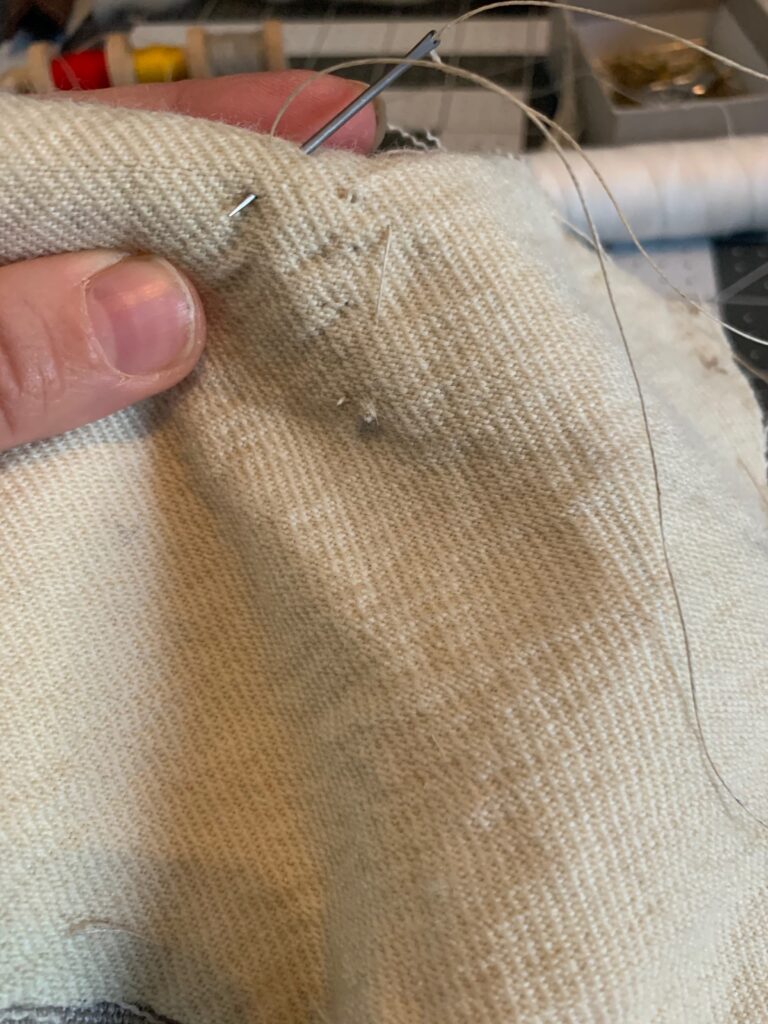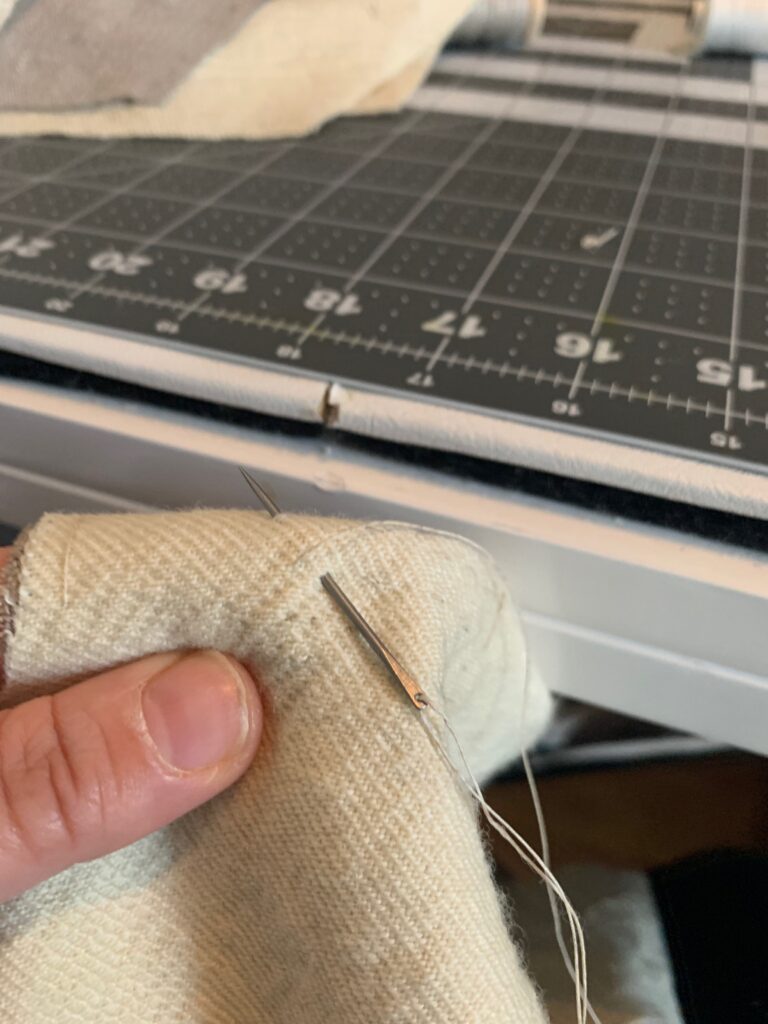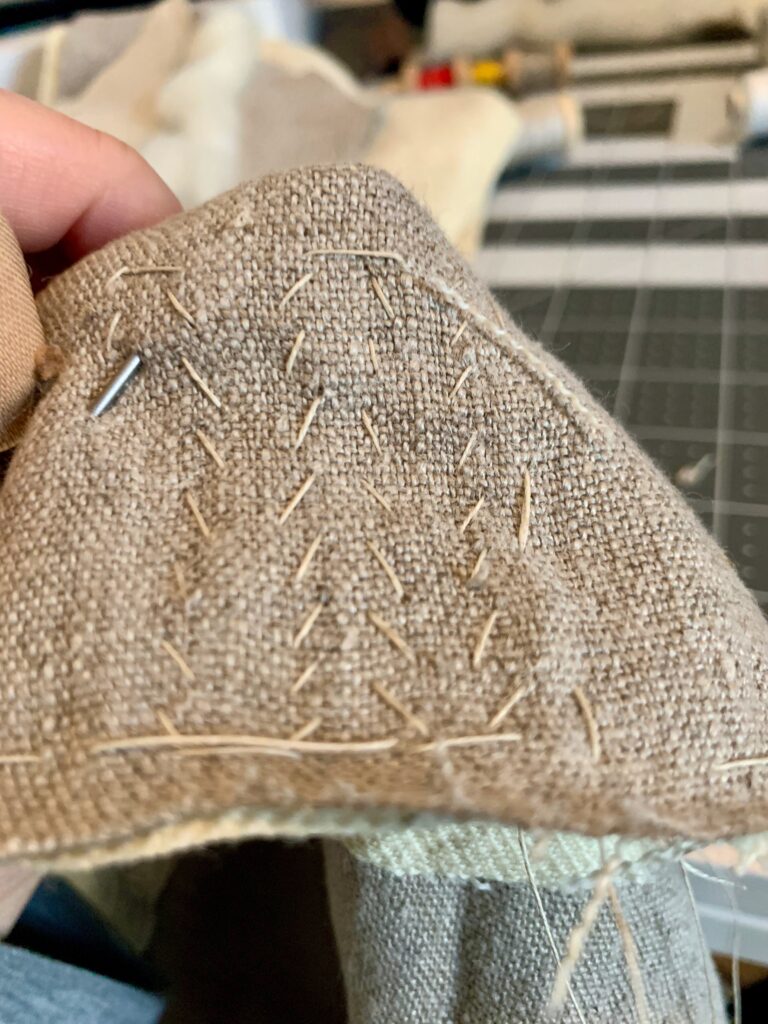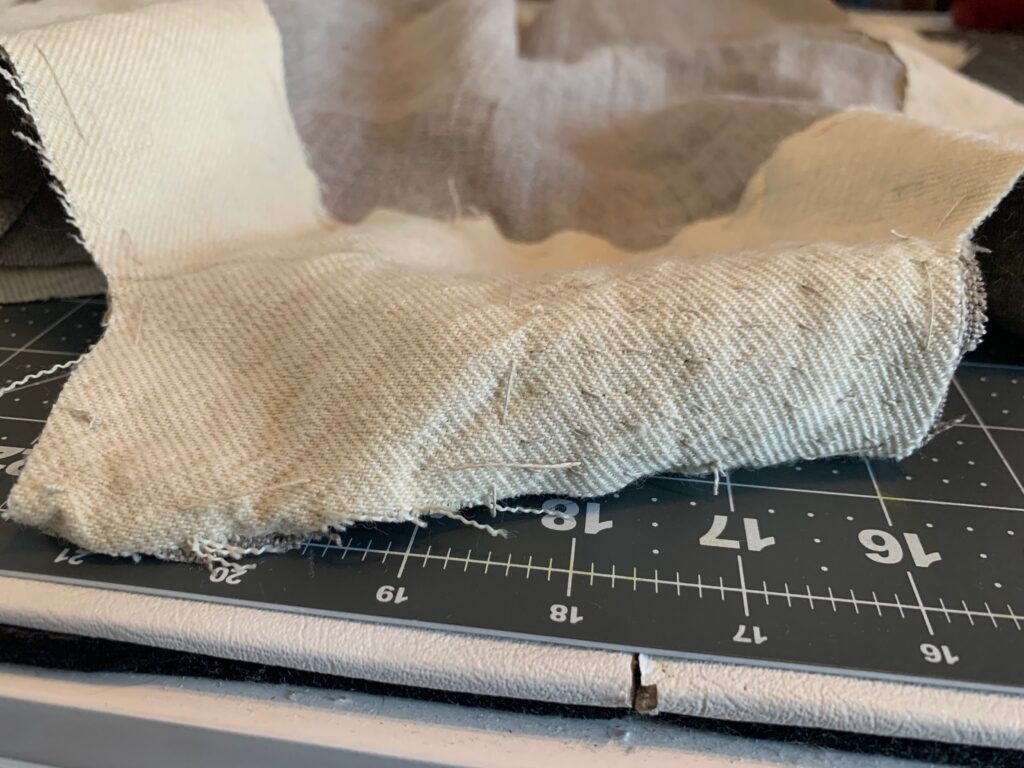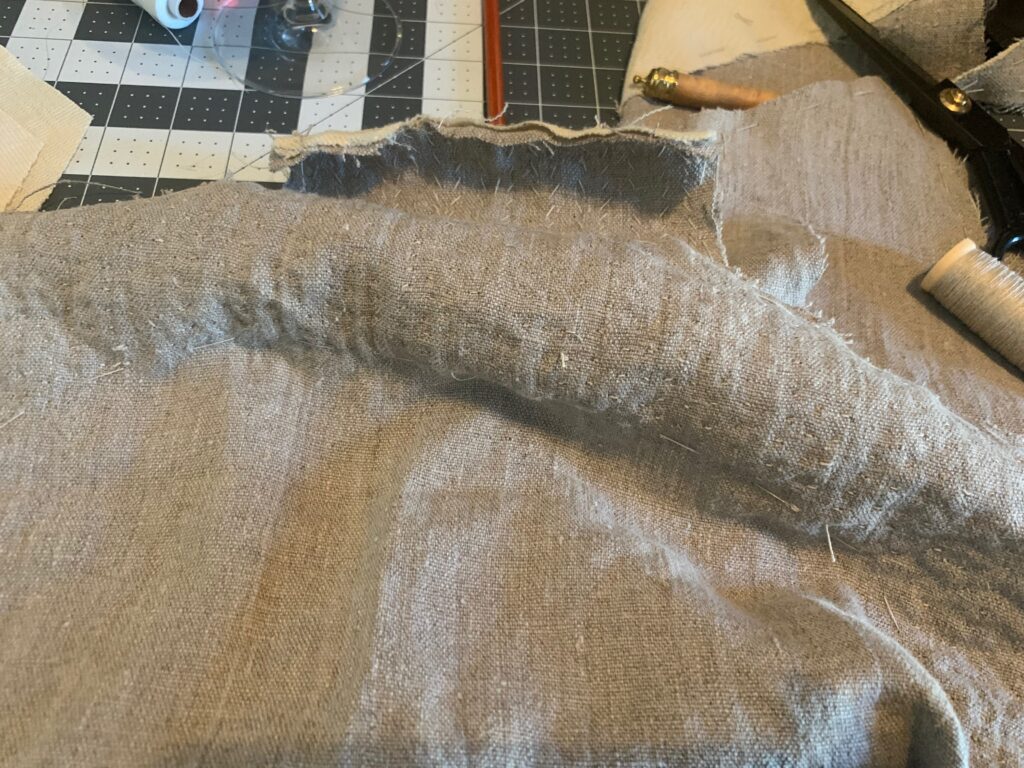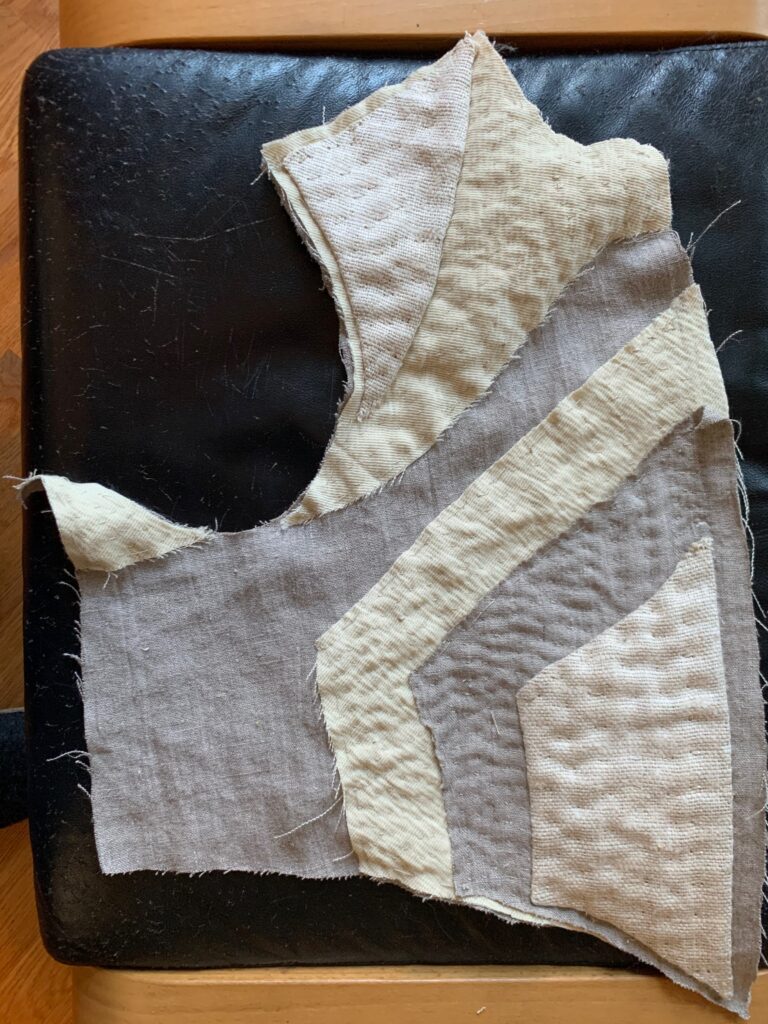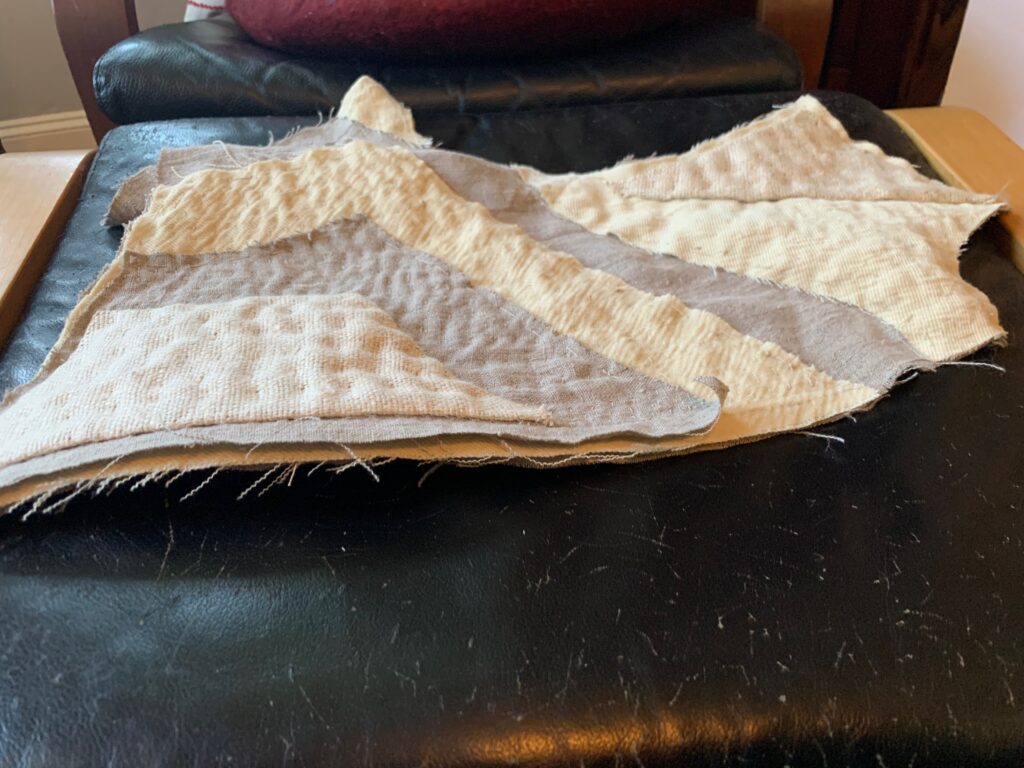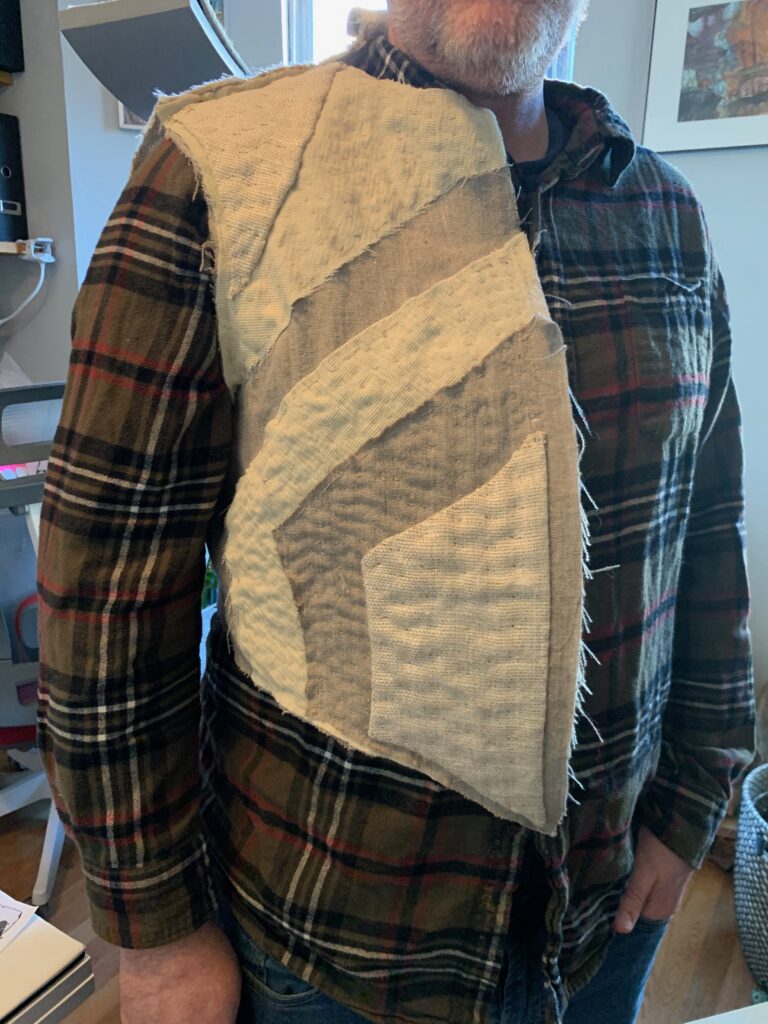Today, I intended to begin trunkhose because of course the doublet would be done. That was before I let the Moroni painting whisper sweet conjectures to me (more about that here). Which is how I ended up spending far too much time constructing the interlining layer of the doublet.
The base is coarse linen, layered with wool serge, an additional layer of coarse linen, open-weave wool and wool roving as padding. The layers are pad-stitched layer upon layer and reenforced by a double row of boning (synthetic baleen in this case). All of this was sewn together with coarse linen thread and a long bronze needle. Interestingly, though pad-stitching is always hard on the hands this process with the bronze needle was easier than with a modern needle.
A note about pad-stitching. On the surface pad-stitching stiffens fabrics making them respond differently but the stitch is not meant to just reenforce, it is designed to shape. You manipulate the curve of the fabric as you stitch to encourage the fabric to bend in a direction. For this project, I followed a conjecture of the curators of 17th century men’s patterns book. In modern pad-stitching the inner curve looks like dashes and the outer curve like diagonal lines. Braun conjectures that the pad-stitching was formed in the opposite direction with the diagonal (pulling) stitch on the inner curve. As it turns out, I completely agree with them and will be using this method in other garments with defined curves.. The curvature is more nuanced and the shape holds beautifully in this interlining. I would love to see an analysis on the extant sottana bodices to see if it holds in a garment meant to straighten out curves but that is a thought for another time.
PS: You might have noticed that I seem to be in no hurry. That is absolutely true. The work takes the amount of time it takes — True to my bias which is that the process is the point. I hope it all gets finished in time but only time will tell.
Here are some pictures and a link to more pictures and information on the interlining process – Fioredibard.net
I am Nobildonna Fiore Leonetta Bardi (Fee-oh-re) also known as Fiore di Bardi (she/her). Primarily a costumer, I specialize in Florentine dress from the mid-1560s to ~1590, hand sewing, and embroidery. My area of interest includes research of life as an illegitimate woman in Florence, the Florentine Camerata, artifacts and practices for a noblewoman of this time — including the practice of hunting and falconry in Florence, and Florentine textiles. I am increasingly interested in the people we try not to see and which most would have tried not to see even in the 16th-century, namely those of mixed race in Europe. Especially how a person of my lineage (I am of African, French, and Spanish descent) would have lived in 16th century Italy. Motto: Penso e Creo * Blog: www.fioredibardi.net * Instagram: @dressingflorentine

